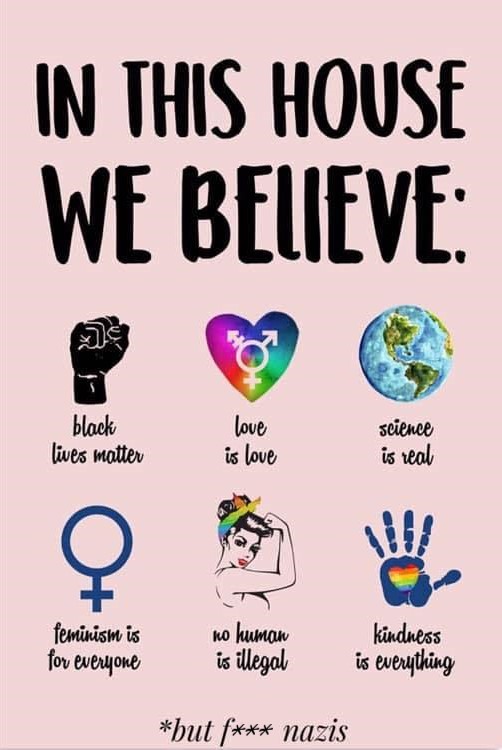I’ve only been a Catholic for two years. Two years. That’s not long, in Catholic terms. And of course, when you enter a community, you don’t begin by first understanding every nuance of their people. You get to know the surface level of the people and the core tenets of their bond. But as you sink in longer, you start to see more and more sides of people, their delights, their frustrations, their arguments, etc. Since I came into the Catholic faith already barreling through books and podcasts at a million miles an hour, I didn’t stop, and these two years have been almost as enlightening as the one leading up to my conversion.
One thing of interest to me is the general Catholic community’s response to traditionalists (rad-trads, glad-trads, etc). Ironically, since I converted from a pretty vague and liberal non-denominational Christianity, I’ve seen it in other people’s faces as I myself have approached them. My goal in this article is to offer a method of healing conversation in this rift between modern Catholics.
The source of conflict seems to arise from the Second Vatican Council, started in the early 60s, generally concluding around 1965. This council was different than many, primarily being *more of a pastoral council, rather than being a doctrinal council, as almost all others in the past had been. One of the documents from this council was Sacrosanctum Concilium, a document that addressed the shape of liturgical life within the Catholic Church. In and of itself it left a lot of wiggle room, but the idea was to remember the way that the early Church adapted itself to the many cultures it was evangelizing to, and the way that it married the sacred and true, within the church, with the beautiful that was found uniquely expressed in the people it was preaching to. Pretty soon after the Second Vatican Council, however, came up a group called the *Concilium, who took it upon themselves to respond to Sacrosanctum Concilium‘s demands and modify the regular Catholic Church’s liturgy so that it conformed to the Council’s demands. It is generally agreed that the *Concilium was much more left-leaning than the Council Fathers themselves, and modified the liturgy in much more extreme ways than anticipated. The result? The *Missal of Paul VI, or the Novus Ordo Missae, the New Order of the Mass, standing in contrast to the Tridentine Mass of old. As you can imagine, not everyone was happy with the new changes.
Imagine Father Michael, a priest at a pretty normal parish. He knows most of his parishioners well. One of the parishioners, John, has talked with Fr. Michael often about the Liturgy and traditional elements of the old Latin Mass. But John is not the only trad that Fr. Michael has known. He’s encountered many trads in the past who are angry, perhaps vitriolic in their speech, and who waste no time in correcting Fr. Michael or his fellow priests on ‘abuses’ of the liturgy. John has never himself demonstrated these negative behaviors towards Fr. Michael, but he has been talking more and more about traditional liturgy and traditional Catholic practices.
One day, John approaches Fr. Michael with a calm smile on his face, excited to talk about a new element of traditional liturgy he learned about the other day. Fr. Michael sees John coming and immediately tenses. What will he do this time? Is he finally going to be angry? Reprimand him with false authority? Call him a bad priest? Fr. Michael steels himself, puts up a wall to genuine conversation, and hopes the barrage passes soon.
Sadly this reaction is not uncalled for. Recently Bishop Barron directed a video to trads who, while claiming to uphold a better example of the faith, are spewing vitriol all over the internet and social media, committing the mortal sin of calumny. Despite the novelty of my own Catholicism and the staunchly different origin of my conversion, I have encountered the same measure of ‘shut down’ from priests and other church leaders that I have directly spoken with. Once they learn that I’m even interested in elements of older liturgy, they seem to stop listening, and steel themselves against whatever I might say next. It seems to me that this conflict of the recent past has erupted into mountains of pain and ill-speak. The result? Liturgy has almost become a taboo topic within the Catholic Church. People put themselves and others into camps, they don’t open themselves up to hear what other influences might offer, and nothing productive seems to be done.
My goal here is to offer a bridge of connection, a way for non-trads to understand trads.
Firstly, why are trads always so angry? Why do they hurt people so recklessly? There may be a mountain of reasons, but one thing most trads have in common is this: a desire for beauty.
Think about walking into a beautiful old Cathedral, that has stood since the time of the Roman Empire, but has been burned down and abandoned. What is that pain that you feel, watching something so beautiful be cast to the wayside?
Recently I walked into St. John’s Episcopal Church for the first time in Tallahassee, Florida. Beautiful. Stunning. Compared to the Catholic Cathedral of St. Thomas More down the street? A hundred times more beautiful. But when I thought about that Church not being in Catholic hands? When I thought about the Catholic Church just down the street not having the same level of beauty? I felt a pain in my chest. A heartache.
The main source of anger, or, if more vulnerably revealed, sadness and hurt, is having a high expectation of beauty and reverence in every aspect of the Catholic faith, but not having those expectations fulfilled.
The Catholic Church is nigh 2,000 years old. It’s traditions are old and beautiful, and have had much time to refine themselves and become elevated to all new levels. Architecture, music, art, iconography and liturgy have all had so much time to be taken to such high levels of sophistication that the trad has many expectations for the current Church. Yet when a trad walks into a Church shaped by the Novus Ordo Missae, he typically does not find these things. Along with many of the adaptations of the Novus Ordo in the late 20th century, architecture became increasingly simplified. Music was taken in from local cultures, and Gregorian Chant was all but deleted. Art was infiltrated by modernists and postmodernists. Liturgy had many elements of mysticism erased, and, comparatively, can be incredibly less reverential.
When a trad looks at a ‘progressive’ Catholic Church, they feel pain from the lack of fulfillment of their expectation.
Regarding Vatican II
Certainly, yes, there are trads who actually have beef with the Second Vatican Council documents themselves. They think the Church has somehow ‘protestantized’ itself, abandoned Church teaching, and is living in some sort of apostasy. But not all trads are that way. I, for one, enjoyed the Vatican II documents. Were it not for them, I don’t think my article here would be very welcome by clergy. Even understanding Sacrosanctum Concilium, while I admit has been difficult for me, is something I can get by. But in processing that document and coming to terms with it, it has helped me understand something about the relationship between more progressive and conservative strains of Catholics.
The Sacredness of the Liturgy
What I think non-trad priests and clergy may not understand about the trad movement is that the manner of celebration of the liturgy and conformity to the Second Vatican Council are not a unified identifier for trads. In other words, just because I as a trad do not like the Novus Ordo Missae as much as I like the Tridentine Mass, does not mean that I don’t agree with the Second Vatican Council. These things are separate.
Bishop Barron, in a video (1:20) recently about the Second Vatican Council, reminded viewers that the Novus Ordo Missae spiritually fed the lives of saints such as Mother Teresa and St. John Paul II. While it might be easy to retort that the Tridentine Mass spiritually fed almost all of the other saints in Catholic history, it is important to recognize what Bishop Barron is getting at. In many ways this is what a lot of non-trad clergy would wish for trads to understand. Since the Novus Ordo is valid and licit, it means that Christ is present just as much there as it was in the old Mass. It is an objectively good thing. We don’t need to return to an older liturgy just to find Christ’s presence, or to be reverent when praying the Mass. Reverence is just as possible in the Novus Ordo as it is in the old Tridentine Mass.
Fr. Michael O’Loughlin, a Byzantine Rite Catholic priest, once said something that made me think about this. He highlighted on the podcast Catholic Stuff You Should Know that the Novus Ordo may not be as outwardly obvious when it comes to portraying reverence for Christ, but does not negate it. It just means that the responsibility for reverence lies more within the heart of the mass-goer to seek out and give that worship. This, compared to something like the Tridentine Mass, where directions for reverence and general beauty are simply more obvious and easier for people to understand. Fr. Michael’s point here is that it actually demonstrates a stronger faith if someone is able to find Christ in the Novus Ordo, as much as that person is able to find Christ in the heart of a homeless person, because they don’t need all of the outward beauty in order to carry their minds into the deep heart of Christ’s love.
A bridge between these two perspectives.
Wise trads will legitimately recognize the validity of the Novus Ordo, and should even agree that reverence is just as possible. But how do we find a path forward between self-identified trads and non-trads? What do we talk about?
The first point is that just because reverence and beauty are possible does not mean that they are effectively implemented. In order to make the Mass adaptable and understandable to the many cultures it has reached out to in this globalized world, many optional instructions had to be introduced. Even though the general structure is the same as the old Tridentine Mass, there are many ways to adapt the Novus Ordo Missae that may make it look very similar or incredibly different.
One of my firm beliefs, and this may be the most important section of my article, is that there are many ways that the Novus Ordo Missae can be implemented that would actually form a bridge to those trads that people seem to be so afraid of. My suspicion is that upon implementing these changes, or at least seriously entertaining these more traditional aspects, many may find that rad-trads will be plenty appeased. As I previously said, the source of pain in a trad’s heart is usually about a lack of beauty within the Church. When the only people offering these elements of beauty are those offering the Tridentine Mass, should we be surprised that people would flock to that? *After listening to a recent episode of the Burrowshire Podcast, I would even go so far as to say that the Novus Ordo Missae can be done incredibly reverently.
Here is a list of things (in no particular order of importance) that should not bring any conflict, and, if implemented reverently, may inspire all to a deeper beauty and reverence for the Mass, all the while *properly and actually conforming to the demands of Sacrosanctum Concilium:
A. Reception of the Eucharist
Typically in a Novus Ordo Parish, the Eucharist is primarily received on the hand, while standing. After receiving, the communicant steps to the side and then crosses themselves. They then receive the Eucharist under the species of wine from a common cup. Communicants alternatively may receive the Eucharist, under the species of bread, directly on the tongue, usually while standing as well.
More traditionally, the Eucharist is only received on the tongue while kneeling at an altar rail. Yes, many elders find it difficult to kneel, and an accommodation seems to be in order, but on the whole, what is the best way to receive the sacrificed corpus of the King of the Universe? Tradition says that we should kneel before our King. By receiving directly on the tongue, we are letting the hands that consecrated the Eucharist, the hands of the priest, be the only hands that are worthy of touching something so precious. This posture of receptivity, more reverential towards the magnitude of God-made-flesh, communicates this reality not only to the communicant, but the whole community around them. Then, the communicant does not cross themselves. Why? When crossing oneself, we are calling to us the presence of the triune God in our prayer. In the reception of the Eucharist, have we not received the most perfect earthly presence of God into ourselves? At best, crossing oneself is redundant, and at worse, it is border-line heretical, not acknowledging the true presence of Christ within the Eucharist, thinking that there is some ingredient further necessary in the reception of the Eucharist.
Lastly, regarding the common cup containing the Eucharist under the species of wine, we traditionally find that the laity does not regularly consume it. The Catholic Church teaches that the Body, Blood, Soul, and Divinity of our Lord Jesus Christ is present in the Eucharist under each species. If you only receive one form, you receive it all (hence during this time of pandemic, we do not commonly find the distribution of the common cup). At times of importance in one’s life (confirmation, first communion, marriage) it is encouraged that the laity may receive under both species, but certainly not every Sunday. Some of the reasons are for logistic purposes, but generally it is so that the Eucharist is handled as carefully and reverently as possible.
B. Celebrating Mass Ad Orientem
Typically in a Novus Ordo Parish, the priest celebrates Mass while facing the people. More things are typically pronounced aloud so that the people can hear and generally feel more included in the act of consecration.
More traditionally, the priest celebrates Mass while facing away from the people, typically facing the crucifix that the laity themselves look at. Did you know that Catholic Churches are typically constructed so that the laity faces the east (oriens)? The idea of the Mass is that the priest, as the representative of Christ, offering up the sacrifice of our Lord, is doing so with the people. In the modern sense this would seem to suggest that the priest face the people, as an act of cooperation, but in tradition the priest also faces the east (ad orientem). With everyone facing the same direction, it helps everyone call to mind that what is happening during the mass is not something that is internal to the Church; it is directed towards something Heavenly, something outside of the Church.
An often circulated idea around the internet is this question: Which way would you prefer your bus driver to face? Towards the passengers, or away from the passengers, leading them as they travel on?
C. Using Gregorian Chant
Typically in a Novus Ordo Parish, Sacred Music takes on the form of hymns in the local language, or in the language of most of the parishioners. Sometimes other music like popular Christian Rock songs may find some adaptation into the liturgy as well. Many instruments are potentially used: guitars, violins, trumpets, keyboards, pianos, etc, in addition to the traditional organ. There are many ways that the ordinaries of the Mass can be sung, usually with one overriding melody that repeats throughout the ordinaries.
More traditionally, Sacred Music exists in the form of Gregorian Chant or Polyphony. Many people find this daunting because of the use of Latin, but more on Latin in a second. Polyphony is when multiple voices come together and harmonize around the traditional Gregorian Chant music. This music has, intentionally, a more solemn tone than much modern music. This is not contrary to the Christian image, it is to be encouraged! The documents of the Second Vatican Council say that Gregorian Chant should be the golden standard of Sacred Music. This does not mean to cast it aside: it means that Sacred Music should conform largely to the form of Gregorian Chant, excepting some differences for how it can be localized in different regions. One example of this is how we might view chant in the High Anglican Church or in The Ordinariate of the Chair of St. Peter (The rite within the Catholic Church that is an Anglican celebration of the Mass properly ordered under the rule of the Catholic Church). Because of a more intimate familiarity of the use of the English language within a holy setting, the Ordinariate and the Anglican Church, I believe, contain more Sacred Music that is in the form of Gregorian Chant, but which properly recognizes the way that it interacts with the English language. In the end, this is what I think Vatican II wanted to see, not upbeat guitar music in Mass.
Unfortunately when the Norvus Ordo was implemented, the standard of Gregorian Chant materials for it were delayed and not fully implemented. The result is that Gregorian Chant has fallen to the wayside in the modern Church. It needs to be revitalized!
D. Using Latin for the Ordinaries of the Mass
Typically in a Novus Ordo Parish, Latin is not used. It might be used on occasion during extra solemn occasions (during Lent or Advent). Even then it might only be used for the penitential rite and for parts of the Liturgy of the Eucharist, like the Sanctus and the Agnus Dei. When combined with some sort of chant, the music tends to have a simple tone (compared to a highly variant tone).
More traditionally, Latin is used for the whole of the Mass, except for the Homily. Vatican II documents call for, at the very least, that Latin be used for all of the Ordinaries of the Mass. These are the parts of the Mass that don’t change week to week. The goal is that the laity learn what the Latin is for these parts of the Mass and don’t have difficulty encountering them on the regular.
Further, by using Latin, a language not commonly used by the laity, the Mass becomes a place of extraordinary difference. It becomes the most out-of-place element of our lives. It stands out. By using this different, albeit common, language across the same rite, the liturgy itself helps Catholics remember that the world they are living in is a passing and fleeting place, that the reality of Heaven is more beautiful and other compared to the world that we currently live in. Latin helps draw the Catholic out of the haze of this world and encourage them to seek what is holy, which is often considered illogical by the world.
The goal is not to alienate the laity from the Church, it is to remind the laity that they are aliens to the world and the world’s ways.
E. Bowing when certain names are pronounced during the Liturgy
Typically in a Novus Ordo Parish, everyone bows during the pronunciation of the Nicene Creed, when acknowledging the conception of our Lord by the Holy Spirit through Mary. Entering the Church, and ideally every time that someone crosses in front of the altar, all genuflect.
More traditionally, in addition to the elements above, everyone bows at the pronunciation of the name of our Lord and when the Trinitarian doxology is pronounced, and during the Nicene creed everyone genuflects instead of bowing. These extra gestures of physical movement, which are inherently reverential, direct the worshiper towards Christ and towards God many times throughout the liturgy. Call it Active Participation, if you will.
F. Forgoing the assistance of Extraordinary Ministers of the Eucharist
Typically in a Novus Ordo Parish, there are a regular squad of Extraordinary Ministers of the Eucharist, who help distribute the Eucharist and, ideally, speed up communion. They make the whole process more efficient. These are especially necessary when considering the distribution of the common cup, as the priest alone cannot effectively distribute both forms of the Eucharist in a timely and careful manner. By distributing the work out, it is possible to help everyone receive under both species in a safe way.
More traditionally, the laity do not receive from the cup. They only receive the Eucharist under the species of bread, except for special occasions. Calling back to the idea of receiving the Eucharist in a more reverential way, the use of Extraordinary Ministers presents conflict for the traditionalist. Extraordinary Ministers of the Eucharist are not able to consecrate the Eucharist itself. They have not been ordained to consecrate it. The priest’s hands, by virtue of his priesthood and by virtue of the hand cleansing that he does prior to the consecration of the Eucharist, is particularly disposed to handling the Eucharist in a reverential way. No matter how much hand sanitizer an Extraordinary Minister uses, it does not change that they do not share themselves in the priesthood and that they do not set aside their hands for holy purposes the way that a priest does, especially during Mass. They are not as “set-aside” as the priests intentionally are. You will also find trads become uncomfortable if they see a priest touch his face after having consecrated the Eucharist, prior to completing the Liturgy of the Eucharist.
Ironically, while Extraordinary Ministers are Extraordinary, they are a pretty ordinary staple of most Novus Ordo parishes.
G. Vestments for Lectors and Cantors
Typically in a Novus Ordo Parish, Lectors and Cantors (much less Extraordiary Ministers) are not vested. They are not marked as set aside for the purpose of Holy Mass. I have always seen Altar Servers vested, but I have only ever seen Lectors vested in one Church, and I have only ever seen Cantors vested in one other.
More traditionally, anyone directly supporting the flow of Holy Mass, be it lectors, cantors, or altar servers, are all vested. By having some kind of vestment, however simple, it helps all involved recognize the measure that the Holy Mass is “set-apart.”
Something else about these roles that disrupts an air of reverence is how the altar is approached and treated by these figures. In the Tridentine Mass the priest spends a significant time in prayer before ascending to the altar to begin the Mass, yet in the Novus Ordo Missae lectors, cantors, and extraordinary ministers seem to simply walk up to that area around the altar with a simple bow, if any reaction at all. My wife and I first served as lectors at our Church, but thinking about how casually we were able to enter the area of the altar put us in a place of great discomfort. We initially thought that our Pastor’s restriction of needing to wear fancy clothes was a burden, but we came to think that even that wasn’t enough.
H. Incense. All the time.
Typically in a Novus Ordo Parish, incense is used on special occasion, typically in times of solemn celebration.
More traditionally, incense is used
every.
single.
Sunday. (and every sung mass)
’nuff said.
In Summary
Should all of the more traditional elements of the liturgy, as lain out above, be incorporated into the Novus Ordo Missae, I imagine you would find many trads happily cooperating and participating in non-Tridentine Mass. I truly believe that much of the unrest in trads’ hearts lies with the way in which the Liturgy is reverentially treated.
These suggestions are not somehow contrary to the Second Vatican Council. They are very much in line and are able to be used in the Novus Ordo Missae. The desire for their inclusion is not bad, either. The desire for the more traditional implementations of these elements of the Mass are holy. We are an institutional Church. We desire not only to be more holy at the individual level, but also as parochial , diocesan, national, and global communities.
Don’t be afraid talking to a trad. Some are scary, I give you that. Some are spiteful, hateful, and are in deep need of love, just as much as anyone. But if we, as Catholics, were more unified and more reverential in our conduct of the Mass? I think we would find this source of division to be a source of holy unity and power in the modern world. Church isn’t where we go to be comfortable. It’s where we go to seek that which is out of this world, which is truly “set-apart,” or holy. Let’s treat it like that.
The most important thing is that we celebrate one Eucharist, and that we know Jesus loves us.
Yes, yes, we know. We get it! But more and more young people do not platitudes. We don’t want to be appeased. We don’t want to be handheld through the faith and through the liturgy.
We want to be challenged.
We want the liturgy to put us in our place.
We want to worship God.
We want to break that jar of perfume for our Lord’s feet.

Post Script
Resources:
#011 – What You Need to Know about Vatican II – Burrowshire Podcast
This podcast, hosted by Brandon Vogt and Father Blake Britton, delicately and profoundly engages the meat of the Second Vatican Council. They address the notion of the Para-Council which dramatically affected the Post-Conciliar Church, especially when considering the Liturgy.
*Based on listening to the Burrowshire podcast, I made a number of edits to this article. Any changes will be noted by this asterisk note.










